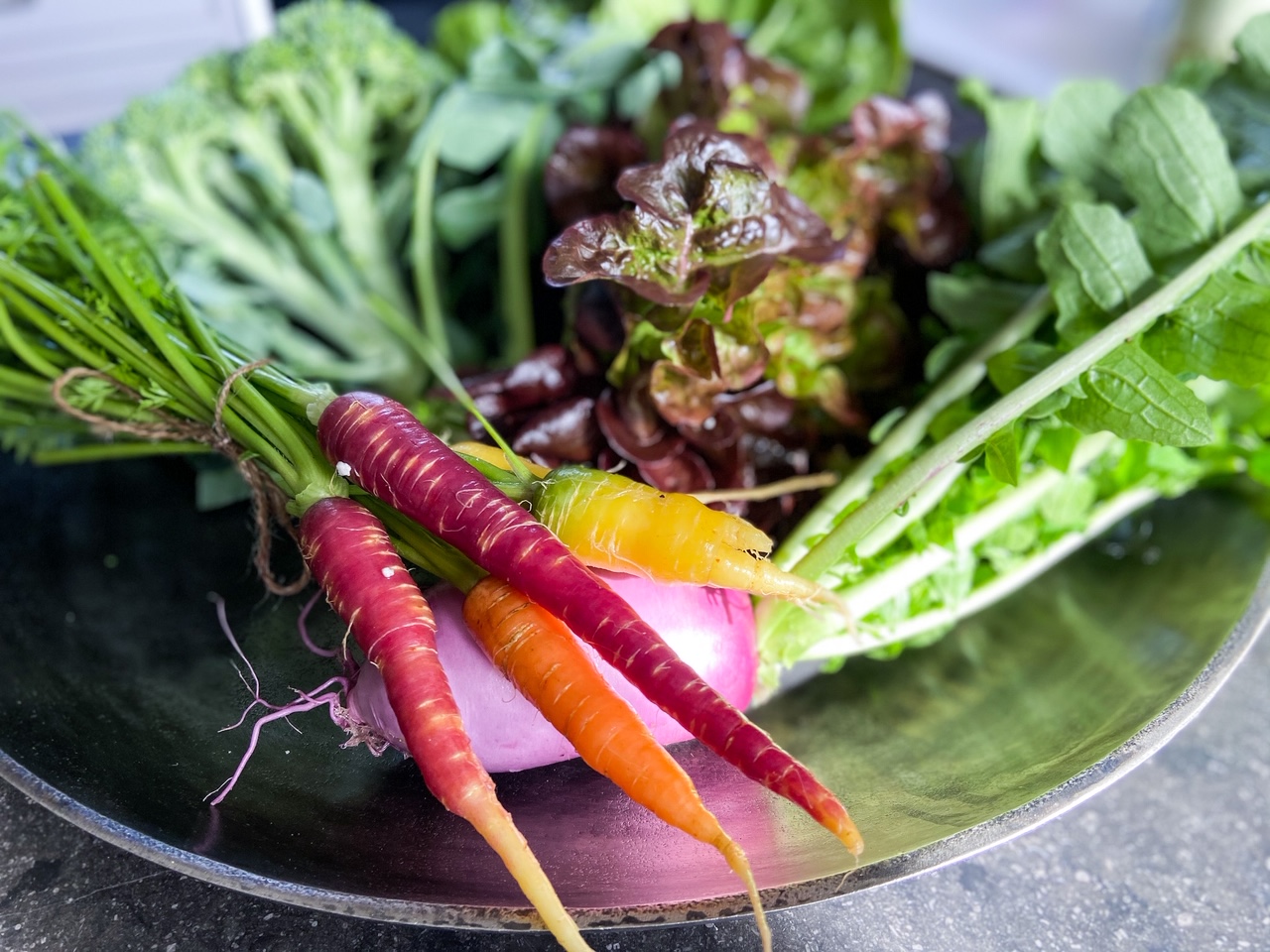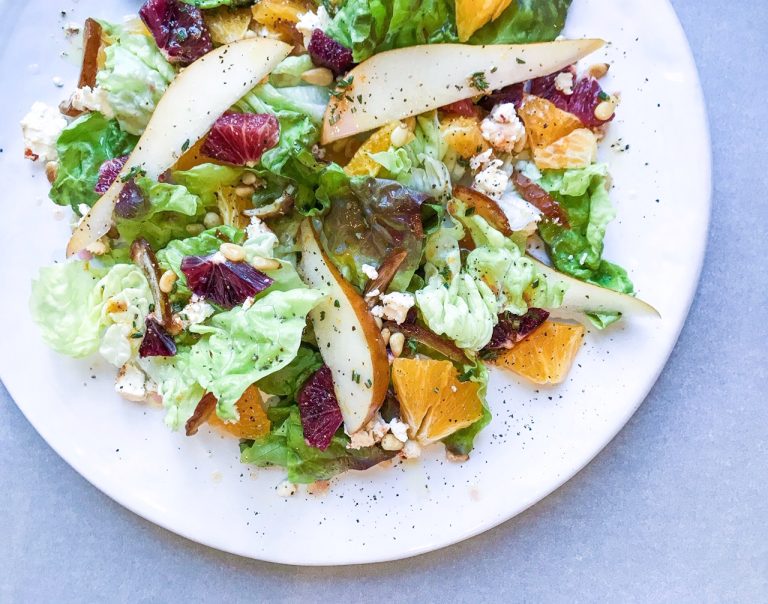Hello, my beloved readers! I want to provide a little normalcy to you during this very different time. Concern and confinement within our homes are the new norms. I understand how trying to be excited about ANYTHING is a bit hard. For me, I look forward to grocery shopping early in the morning or walking into a coffee bar for my favorite cup of poison. Unfortunately, these things are going to have to wait. Plus, it’s not that bad of a sacrifice if we consider the alternative, am I right? One thing is for sure: we are all cooking a little bit more as we find ourselves hunkered down with our cuddly pets, family, and close friends. With or without a threat weaving its way in and out of our lives, spring has sprung. It is time to Spring Into Seasonal Eating.
What does seasonal eating mean when it comes to our health?

Many, many moons ago, our ancestors ate in a natural cycle with each season. I am pretty sure they had a healthier diet than us. Today is a much different story. When it comes to our health, our disconnection from those natural cycles is the origin of the modern-day stress epidemic and cause of disease. For instance:
- We stay up way too late; we don’t get enough sleep. And, to balance out all of that fuckery, we use stimulants (like coffee) to keep going with energy. Don’t get me wrong, I would murder a bitch if she tried to come between me and my coffee, but you get my point. Why not fuel our bodies with seasonal food?
- Our sleep cycles run with the seasons. We not only have “daylight savings” to mess us up, but we also have shorter days in winter and longer days in summer. Our melatonin fluctuates with changes in light levels. And with that, we often ignore what our body wants us to do at certain times of the day.
- We tend to get super excited about starting our New Year’s resolutions in January; one of the first months, our bodies are in “chill” mode. By the third week, we give up because of exhaustion. Dopamine to drive ourselves to do something belongs in the spring, not the winter. Why not start that new gym membership in the spring when your body is ready to rock?
How can seasonal eating benefit us?
- Eating seasonal foods is better for our health. Foods grown and harvested during their season are more nutritionally dense. However, frozen foods can also be a great choice since harvesting typically occurs during their peak seasons. Great taste will always be top-notch!
- It’s better for the environment! These foods don’t have to travel nearly as far, so the associated fuel emissions and transportation costs are minimal. Also, buying local helps support your local farmers.
- It’s cheaper. When a fruit or veggie is in season, it’s abundant, and, not surprisingly, available at a lower price. For example, summer is berry season, and that’s why strawberries and other berries are so cheap during those hot months.
Spring into seasonal eating!
- When eating out, choose seasonal dishes. And take home what you cannot finish! Restaurants give us the amount of food they think we need. They can’t possibly know your body or how much you need, but you do. It’s okay to save the leftovers. Leftovers are COOL!
- When things get back to normal with our world and the fight against coronavirus is behind us, venture out to your local farmers market. I will repeat it: support and get to know your local farmers and their love of growing your food. The concept of our food coming from market to home to the stove to the table is a beautiful journey. I promise you will enjoy and appreciate preparing a meal more so.
- Cooking with seasonal ingredients at home is an excellent opportunity to make it a family affair. Get in the kitchen together and create a gorgeous meal!
- Switch up your dining program with each season. When it’s spring or summer, enjoy a light, clean dinner out on the patio. Come fall or winter, break out beautiful candles and pull the curtains for a more intimate dinner table setting. Create a coziness to your meal and take your time eating.
How I Meal Plan with Seasonal Ingredients

Seasonal fruits and vegetables are crispy, fresh, and light. As we crawl out of our winter caves, we crave those types of bright flavors. It’s the best time to start adding bountiful salads to your menu planning, with bases that include leafy greens such as spinach, bok choy, Swiss chard, and mint. Strawberries and blueberries are kisses from spring to throw into those salads or a luscious breakfast smoothie. I don’t know about you, but I’m ready to make out with all of these yummy foods! Here is how I do it:
- At the beginning of each season, I go into a menu-planning frenzy! I comb through my magazine “tear-outs,” add to my Pinterest boards, or flip through my library of cookbooks for spring recipe inspiration.
- Then, I create a master list of all of those ideas inside of my bullet journal. Next to each one, I will write P for Pinterest and which board I can find it, C for the cookbook and the book title, and MR for my recipe ideas. You can do this step quarterly or monthly.
- On Sunday mornings or evenings, I look at my week ahead and plan dinners by plugging recipe ideas into the week. It’s that simple!
Seasonal Veggies
- Avocados, basil, beans, bok choy, broccoli, brussels sprouts, carrots, mint, okra, peas, radishes, spring onions
Seasonal Fruits
- Apricots, bananas, blueberries, cherries, clementines, grapefruits, lemons, pears, pineapples, strawberries
So, for now, I know we all don’t have access to everything at the grocery stores. During this time, think of ways to alter the recipes you find with ingredients you have already. Although I don’t think we as a world will ever be the same again, we must keep our hopes up and continue to help one another where we can. Only buy what you need, and don’t let it spoil. Also, it’s that time of the year again to Organize Your Fridge Like a Pro and Springtime Re-Set Your Pantry if you are looking for things to fill your day. You can also check out this Ultimate Guide to Spring Seasonal Produce from Onegreenplanet.org.
Now that we are coming up on spring, energy and exploration are bubbling inside of us. However, there are times when our bodies and minds get stuck in depression. We become complacent with being in a “restorative mode” of winter and carry that into spring, feeling heavy and depressed. I’m here to remind you; it’s okay to feel this way. Take special care and listen to your body. Remember to get moving. Add exercise to your day. And I don’t mean hitting the gym or taking that yoga class. If you get a wild hair and want to step outside and walk the neighborhood, do just that. The healthiest kind of movement is unpredictable. But most importantly, feed your body the seasonal foods it craves.
In the coming weeks, I will share Springtime recipes for your creative sessions in the kitchen! But for now, here is my Winter to Spring Salad for you lovelies! Happy cooking and most importantly, stay safe!
Ruthie
Print
Winter To Spring Salad
With this this super simple salad, I pay homage to a few of my favorite winter fruits. Pears and blood oranges mingle with a light vinaigrette before dancing out of the room. If you cannot find blood oranges, regular oranges are always available for ya!
- Total Time: 20 minutes
- Yield: 4 servings 1x
Ingredients
1 orange and/or blood orange, peeled and segmented
1 head of butter lettuce, chopped
1/2 pear, sliced thin
4 dates, pits removed, sliced into strips
1/4 red onion, sliced into strips
Vegan cheese, torn into small chunks or shredded
1 tbsp pine nuts
2 tbsp rice wine vinegar
1 tsp fresh rosemary, chopped
2 tsp fresh thyme, chopped
1/4 cup olive oil
Kosher salt and pepper to taste
Instructions
Arrange oranges and the next six ingredients onto a platter. Combine and whisk vinegar with herbs, oil, salt and pepper. Drizzle over the salad and serve.
- Prep Time: 20
- Category: salad




